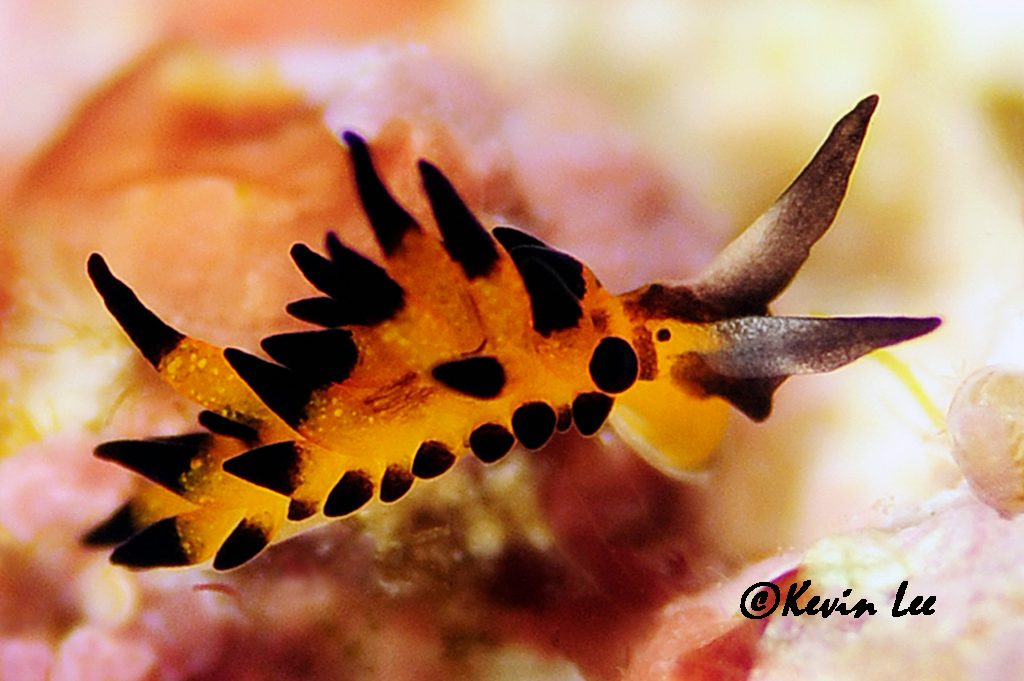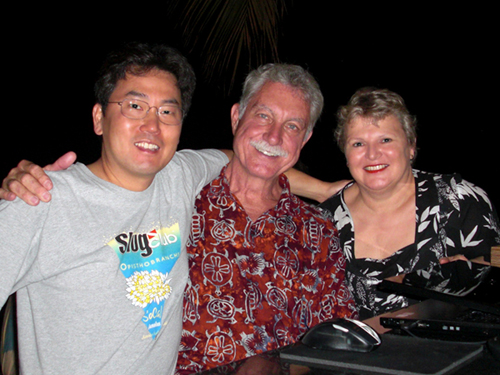 |
Placida kevinleei
Image courtesy of Kevin LeeKenya, Africa
Placida kevinleei McCarthy, Krug & Valdes 2017
Well another series of new species has just hit the street. This time our old buddy Placida cremoniana (Trinchese, 1892) has been split into 4 separate species, one of them named after dear friend and master UW photographer, Kevin Lee.
Externally the animals look very similar, but internals and protein sequencing tell the tale. Externally the coloration of the head and rhinophores is the key. The cerata are very similar between the geographically distant 4 species. In P. kevinleei the anterior stripe on the rhinophores extends only about half their length, see P. cremoniana in Eastern Pacific Nudibranchs where this stripe extends the entire length of the rhinophore. P. kevinleei also lacks the yellow stripe extending posteriorly from the eye spot.
Geographically this species ranges from Hawaiian Islands,tropical Japan, and now Africa.
References:
Behrens, D.W. & A. Hermosillo. 2005. Eastern Pacific nudibranchs. A guide to the opisthobranchs from Alaska to Central America. Sea Challengers, Monterey, CA
McCarthy, J.B., P.J. Krug & A. Valdes, 2017. Integrative systematics of Placida cremoniana (Trinchese, 1892) (Gastropoda, Heterobranchia, Sacoglossa) reveals multiple pseudocryptic species. Mar Biodiv. http://doi.org/10.1007/sl 2526-017-0812-2. Senckenberg Gesellschaft fur Naturforschung and Springer-Verlag GmbH Germany.
Sammamish, WA 98074
Nov., 2017
Send Dave email at davidwbehrens@gmail.com
Kevin Lee, Dave Behrens, and Christiane Waldrich
relaxing after a hard day of slug hunting at Villa Markisa Saraya, Bali,Indonesia!

Kevin certainly needs no introduction to the Southern California Dive Community! On an international level you may have encountered Kevin as he certainly gets around on a life time quest to photograph the many treasures of the undersea world. Based in Fullerton, California, Kevin Lee's adventure gene has taken him to over forty countries. After learning to scuba dive, in 2002, he embraced underwater photography as a way of sharing the ocean's wonders with non-divers. Though aesthetics is important in his photography, Kevin also strives to capture unique perspectives that are of interest to marine biologists and other scientists who study ocean creatures and their anatomy/phylogeny. Though Kevin photographs all marine life that fits in his macro lens, opisthobranchs are his favorite subject. He has photographed and collected invertebrate specimens, with proper permitting, all around the world for scientific research. These pursuits have taken him scuba diving in all Seven Continents, including Antarctica where water temperatures were 29F (-2C). Kevin's work can be seen in the Leatherby Libraries, Chapman University, Orange, California, where his opisthobranch images are on permanent display. Other works have been exhibited at the Branford House, University of Connecticut; Scripps Institution of Oceanography; Monterrey Bay Aquarium; Aquarium of the Pacific, Long Beach; City of Los Angeles (ELC); and other venues. And of course, Kevin continues to contribute marine images for numerous magazines, newspapers, academic literature and many dive related publications. To view more of Kevin's photography, visit diverkevin.com
Send Kevin email at diverkevin@gmail.com |

|
